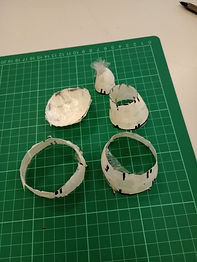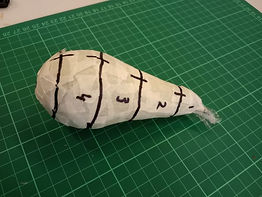Millie Gray
Mixed Materials
Skills Passport
Week One
In our first session we began by looking at a range of thermoplastics noting how they are activated and what they are used for. We then spent the remainder of the session learning how to take a pattern from an object using the following process:
- Wrap your object in cling film
-Cover the clingfilm in small pieces of masking tape
- Draw a series of lines on your object that the pattern can be divide into. I drew circles around my pair whilst others did sections from the top to the bottom or a spiral all the way round the fruit.
- Add a series of notches so the pattern can be accurately aligned after it is cut off the object
- Use a craft knife to cut along the lines drawn around the object giving you a pattern
- cut small slits into the pattern if the pieces are not lying flat so that it can be accurately traced.
Although my pattern fitted together well, when I traced around the pattern onto card my copy of the object did not fit together accurately. I think this was a combination of the thickness card I was using and using circles as my cut-out method. If I were to use my pattern again, I would trace it onto a thinner object and look at trying the spiral or vertical section cutting technique.
Week Three
Week Two
In our second lesson we were working with Plastazote, looking at how to safely cut it and the different joints you can cut as well as how to glue the pieces in the spray booth. The curved pieces we cut out proved the most difficult to glue together with mine quicly splitting apart without multiple hands helping so for this joing to be more effective I would need to let the glue stick for longer. However, when glued together properly I think Plasterzote is a great, versatile material for prop and costume making
We Also experimented with priming and painting the material to see the difference between coating without the primer than with.
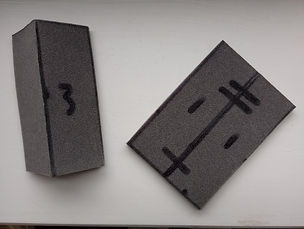
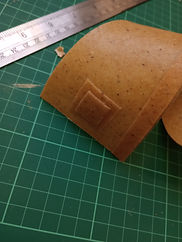
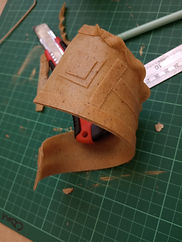
In our third workshop we experimented with the thermoplastic Worbla which can be heated using a heat gun and then moulded and shaped. I chose to use my piece of the material to start to create a bracelet as it allowed me to experiment with moulding flat pieces and more three dimensional pieces.
I used a paint bottle as a mould to wrap the heated Worbla around to create the main piece of my bracelet. I then played with twisting the material, sticking it to one another and moulding it into a ball and then shaping into a stone shape that I could later paint.
I enjoyed working with this material. I think it is a good material for creating props and pieces of costume as it can be easily moulded and can be reheated a reused so there is little waste making it a more sustainable option.
Week Four
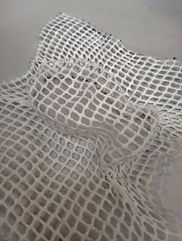
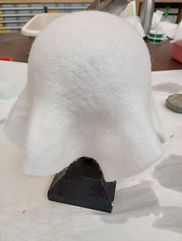
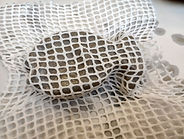
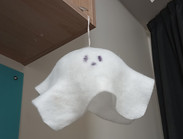
In our final session of the term we experimented with both Varaform and Fosshape. We were able to mould the Varaform using warm water and the Fosshape with a steamer.
I created a mould of fish out of clay which I could mould the Varaform around. This material is good for larger, less detailed objects but it quickly became clear that the material could would not show the level of detail I had sculpted onto my fish. However these detailed elements were able to be added after by moulding smaller pieces and sticking them on top so achieving a level of detail is possible.
I then worked with the Fosshape moulding it around a model head with my hands so that it began to take the rough shape of the object. I then used a steamer, which shrinks the fibres, to mould it more securely in place, however as we were using a fairly weak steamer it did not hold its shape that securely for long so. If I were to continue using this material I would use the steam for longer so that my shape was more secure. I added string and eyes to my piece of shaped fabric to create a hanging ghost decoration for my room.
I enjoyed working with both materials and each gave very different results. I think the effectiveness of each material comes down to what you are making with the Fosshape being perfect for millinery and the Varaform for larger moulded costumes pieces or props.
